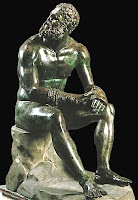I look forward to working with you this year! We'll travel through time and across continents to learn about what unites us a humans. Some basic themes include:
Basic needs of food, clothing, shelter
The desire to love and be loved
People interacting with people and people interacting with nature
Man's role in creating ... and manipulating nature
Man's interaction with his environment
Man's control over/companionship with animals
People working and playing
Religion
Politics
Economics
Architecture
Painting
Innovations ... New Technologies
Portraits
"Green" Building and "Eco Friendly" concepts
Power
People are people. We'll see how and why humans created over time and across continents.
Homework tonight:
Bookmark the blog. Join the blog as a follower.
Read the introductory chapters in BOTH volume 1 and Volume 2 of the book.
Homework due FRIDAY:
Read Chapters 1 and 2
Sign up on turnitin.com (passwords given out in class on Tuesday)
One of the first UNITS we will explore that is NOT in our book is American Naive Painting. The image on this post is from the
National Gallery of Art in Washington DC. It is part of the temporary exhibit that we will explore online.
Robert Peckham
The Hobby Horse, c. 1840






